Non-stick pans are brilliant for cooking up food that can otherwise be sticky and stubborn, but they don't last forever. If your non-stick surface has started to go, can you remove the coating and use or keep the pan? We've looked into this topic, and here's what you should know:
In general, you shouldn't remove the non-stick coating from your pans. Most of these pans have aluminum under the non-stick layer, which can leach into food as you cook. Your best bet if your non-stick coating is damaged is to recycle the pan and replace it.
If you are set on removing the non-stick coating, you should first verify that your pan is stainless steel underneath, such as All-Clad pans. You can then sand or sand-blast the non-stick coating. Once removed, you can polish and season the remaining steel pan.
In this article, we'll take a closer look at why it's generally best to replace old non-stick pans and when to do so. We will also look at a safe and effective method for removing the non-stick coating if you decide to take that path instead. We'll also see some tips for what should and shouldn't go in your non-stick pans. Read on to learn more!
![A silicone spatula and non-stick skillet, How To Remove Non-Stick Coating From A Pan [Inc. All-Clad]](https://kitchenseer.com/wp-content/uploads/2022/08/How-To-Remove-Non-Stick-Coating-From-A-Pan-Inc.-All-Clad-1200x800.png)
Is It Safe To Remove Non-Stick Coating From Pans?
When the non-stick coating on your pan is scratched or damaged, you may feel tempted to just remove it all and continue to use the pan. But is it safe to do so?
There's not a single straightforward answer to this question. It depends on a number of factors, including the method you use to remove the coating if you are successful in removing all of the coatings, and what materials the pan is made of.
As we mentioned earlier, if your pan is aluminum underneath the non-stick coating, you don't want to cook with it. This aluminum will be unfinished and can leak into any food you cook in the pan. Any remaining flakes of non-stick material can also find their way into your food as you cook.
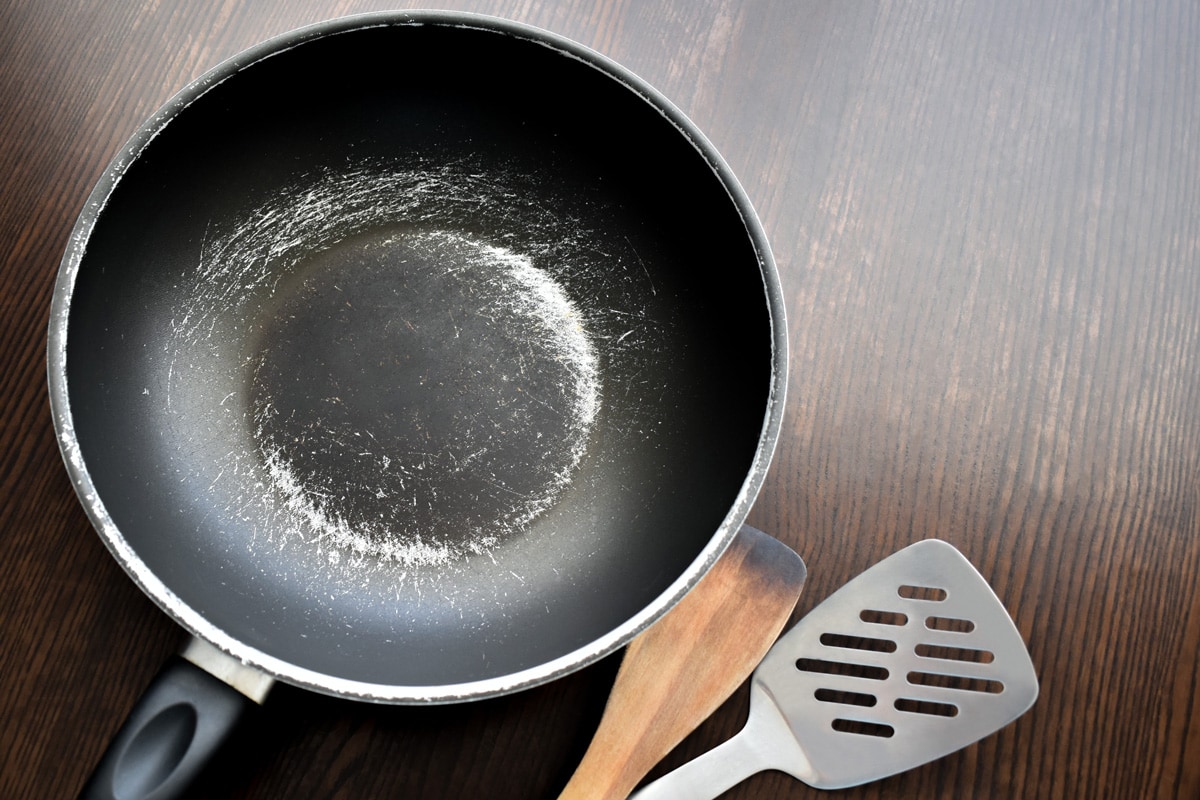
If everything goes perfectly, it can be safe to remove the non-stick coating. However, it's generally easier and safer to simply replace the pan, which is why we recommend following that course of action.
How To Remove Non-Stick Coating From Pans
While we recommend replacing damaged non-stick pans, it is possible to remove the non-stick coating.
The first step is to determine what the surface underneath the non-stick coating is made of. You should be able to find out from the manufacturer. If the material underneath is stainless steel, it will be safe to use when the non-stick layer has been thoroughly removed. If it is aluminum, you shouldn't use the pan after removing the coating.
These non-stick pans from All-Clad have an aluminum core, but the layer underneath the non-stick coating is stainless steel.
Click here to see these non-stick All-Clad pans on Amazon.
Once you've done this, you should prepare the materials you will need to remove the coating, including the necessary safety equipment.
There are many approaches you can take. The most straightforward is to use an angle grinder and a wire cup brush. For this method, you will also need gloves, a dust mask, and safety goggles. We recommend doing this outside or in a well-ventilated garage.
1. Remove the coating with the wire brush
First, put on your gloves, mask, and goggles. Then use the angle grinder and wire cup brush to remove all traces of the non-stick coating. You can also remove any burnt-on grease on the bottom of the pan at this time if you desire.
3. Polish the metal surface and wash the pan
At this point, the coating is removed, but your pan will have a rough, scratched-up surface. To finish the surface, use a polishing disc with your angle grinder and metal polishing paste.
After polishing the pan, wash it thoroughly using a fat-dissolving detergent, such as Dawn. You want to make sure you get all of the paste washed from the pan.
4. Season the pan
Now you can season your pan. Fry up some diced onions in the pan with a bit of salt and oil with a high smoke point. Use high heat and plenty of salt. Fry the onions until they are burnt. Remember, you're not going to eat them, you're just using them to season the pan. Discard everything and wipe out the pan thoroughly with paper towels afterward.
Now, your pan is ready to use. You can see the full process for yourself in the video below:
Will Baking Soda Remove Non-Stick Coating?
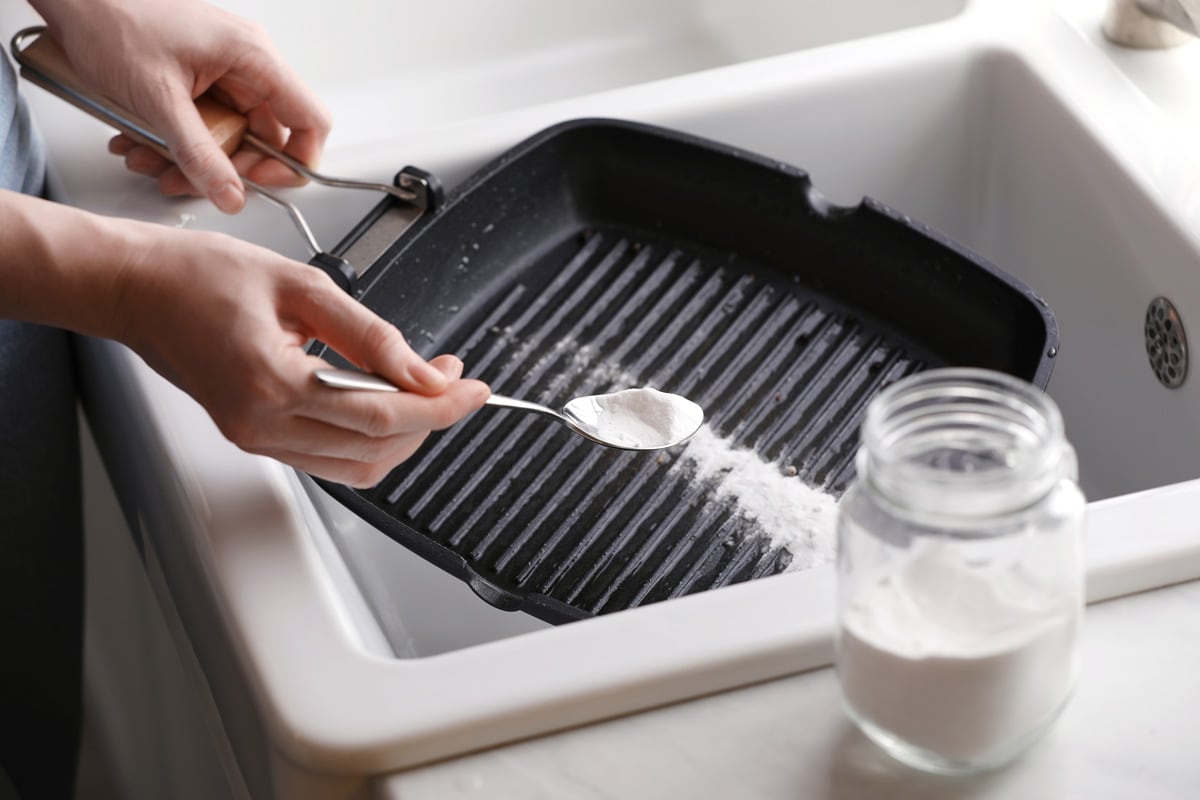
Baking soda is a mild abrasive often used for both cooking and cleaning. But is it safe to use baking soda when cleaning non-stick pans?
Baking soda on its own will not remove the non-stick coating from your pans. You can safely clean your non-stick pans with baking soda without worrying about damaging the pan.
That being said, you can find guides for removing the non-stick surface from pans that use baking soda. However, in those cases, baking soda is used alongside heavy-duty scouring pads. Baking soda on its own or with a soft sponge is perfectly safe for your non-stick pans.
Is It Safe To Use Vinegar In Non-Stick Pans?
Just like baking soda, vinegar is perfectly safe to use in non-stick pans. This is true whether you are cooking or cleaning with vinegar. In fact, you can even combine baking soda and vinegar when your non-stick pans need a deep cleaning.
To do so, first, bring some water to a boil in your pan. Next, move the pan to the sink with the water still in it. Add a cup of vinegar to the water, then two tablespoons of baking soda. Allow the pan and mixture to cool for a few minutes, then scrub it out with a sponge.
You can see the process yourself in the video from WikiHow below:
When Should You Throw Out Non-Stick Pans?
Non-stick pans make it easy to fry up eggs or other sticky foods. However, they don't last forever. Furthermore, damaged non-stick pans can release flakes into your food and create harmful fumes when overheated.
The first thing to look out for is scratches. If there are any gouges or scratches on the non-stick surface, it's time to toss the pan. This most often happens when metal utensils are used in the pan. This is why it's so important to use utensils made of soft materials when cooking with a non-stick pan.
Another indicator that your non-stick pan is past its prime is if food is sticking to it. Of course, no non-stick surface is perfect, and foods that are very sticky, such as eggs or tofu, might stick a little bit. However, if you've noticed that foods are sticking a lot more, the coating is likely damaged. This may have happened because the pan was used on too high of heat or the coating was damaged during cooking or cleaning.
Fortunately, there are a lot of affordable non-stick pans on the market. This means you won't have to spend an arm and a leg when you replace your non-stick pans. Even popular brands often have affordable options, such as the one below from T-fal.
Click here to see this T-fal non-stick pan on Amazon.
Is It Okay To Use Cooking Spray In Non-Stick Pans?
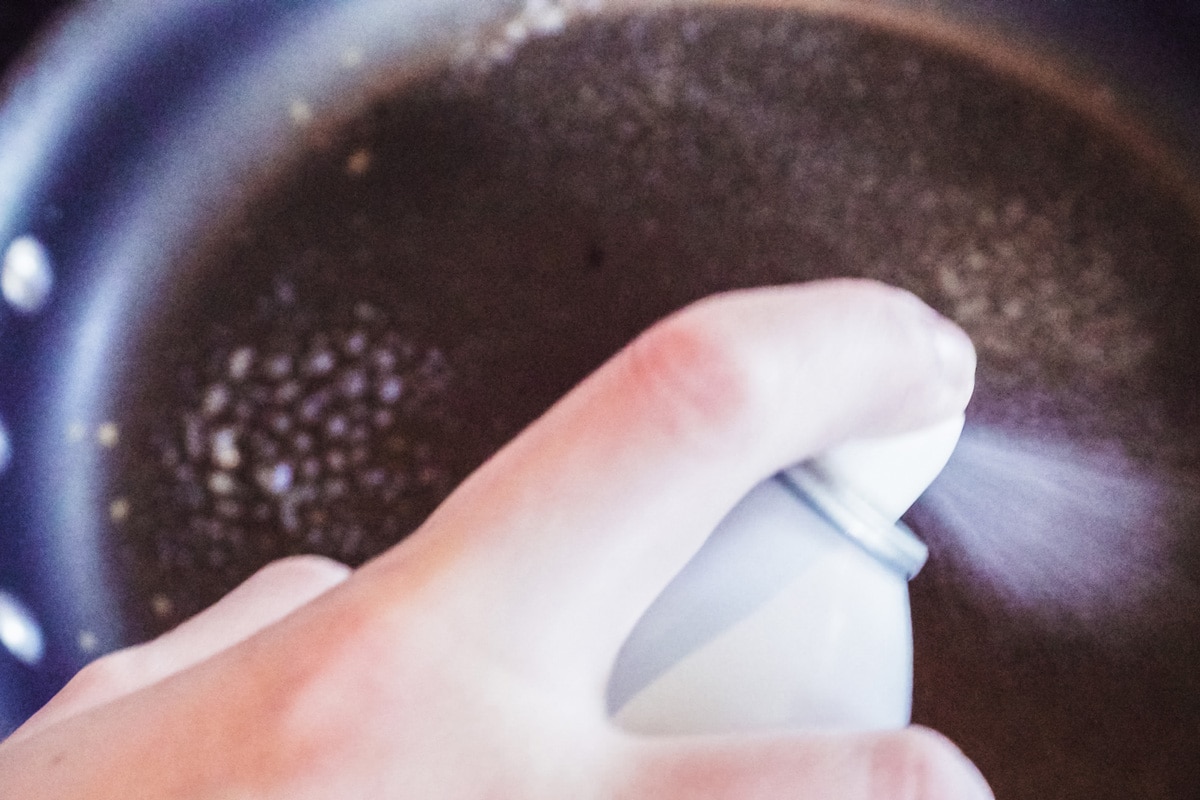
You may have heard that you shouldn't use cooking sprays on non-stick pans but wondered if it's really true. While it may sound like a superstition, there are some merits to avoiding cooking sprays in these pans.
Cooking sprays often leave residues behind on pans. For pans, such as stainless steel, that can handle a rough cleaning, these residues don't tend to build up too much over time. With non-stick pans, however, they are more likely to accumulate.
That's why it's better to stick with non-spray forms of cooking oil. You'll also want to add them to the pan early when cooking with non-stick. If non-stick pans get too hot without anything in the pan, they can release harmful chemicals. Adding your cooking fat before the pan heats up protects against this problem.
Are Cast Iron Pans Better Than Non-Stick Pans?
While they might sound and look old-fashioned, cast iron pans have made a huge comeback in the 21st century. These days, you don't have to look hard to find people who celebrate cast iron and shun modern non-stick pans. But is this ancient tech really better than modern non-stick pans?
The answer is both yes and no. Cast iron pans certainly beat out non-stick pans in many categories. They definitely last longer and you can restore them in a way you just can't with non-stick pans. They also retain heat better and can withstand high temperatures that non-stick pans can't.
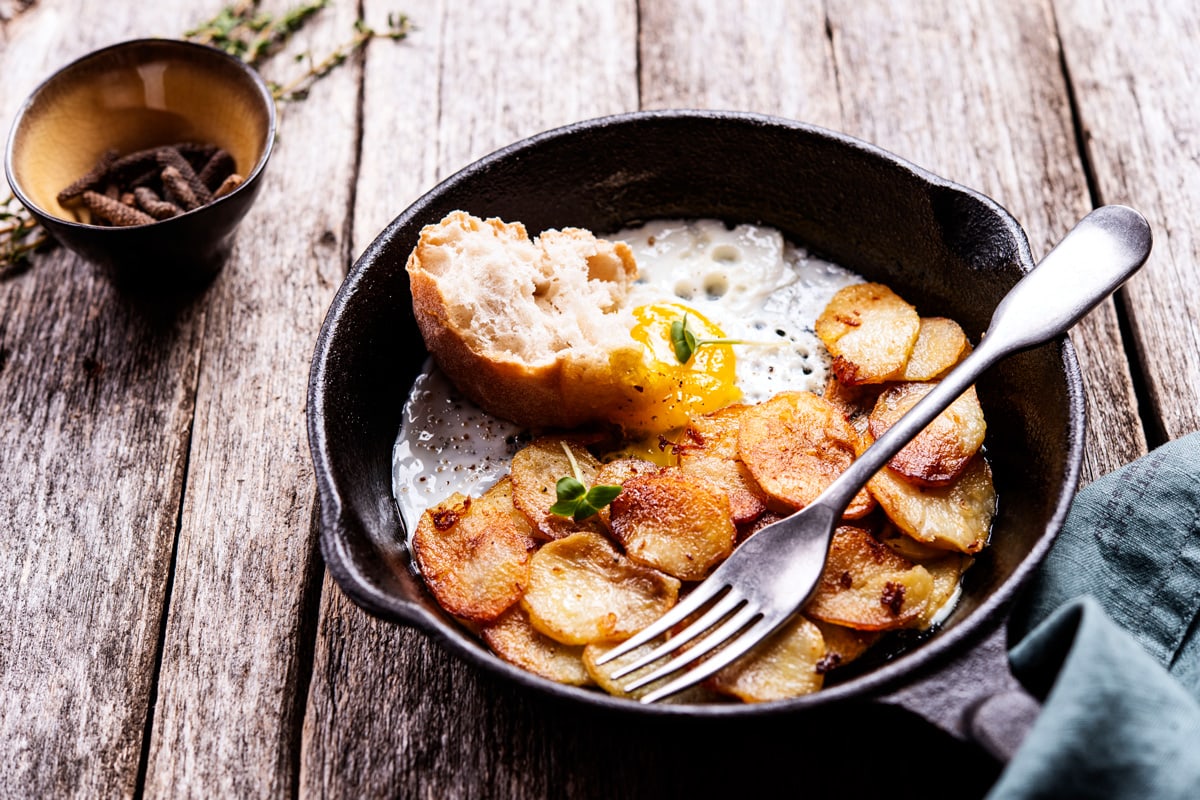
However, non-stick pans have their merits too. They are significantly lighter than cast iron pans. They also require a lot less fuss since cast iron pans need to be seasoned and protected from rusting.
Best of all, their non-stick surface is much more non-stick. Most cast iron pans still have some trouble when it comes to eggs and the like.
We wouldn't say either is better, but they both have their advantages and deserve a spot in a well-equipped kitchen.
Final Thoughts
![]()
In general, it's not worth it to remove the non-stick coating from your pans. Your best bet when your pans become damaged is to simply toss and replace them. However, if you do decide to remove the coating, you now know how to do so safely. You have also learned what is and isn't safe to use in your non-stick pans.
If you found this article helpful, be sure to check out these great posts:
When Should You Throw Away Nonstick Pans?
Are Pans Oven-Safe? [Even With Silicone Handles]



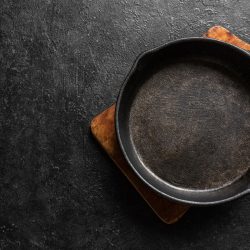
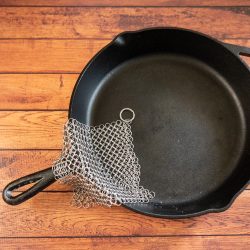

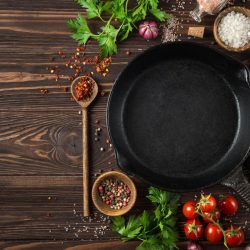
![Cooking frittata with a green asparagus and parmesan on the oven, Are Pans Oven-Safe? [Even With Silicone Handles]](https://kitchenseer.com/wp-content/uploads/2022/07/Cooking-frittata-with-green-asparagus-and-parmesan-on-the-oven-250x250.jpg)
